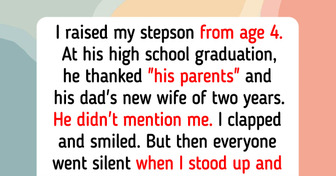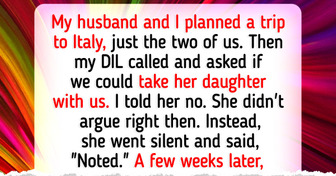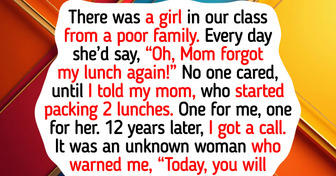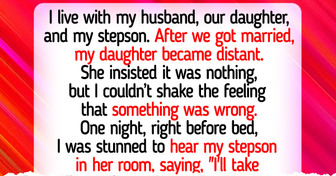14 Stories That Prove Kindness Takes a Moment, but Means the World
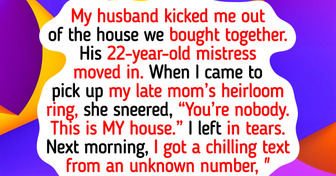
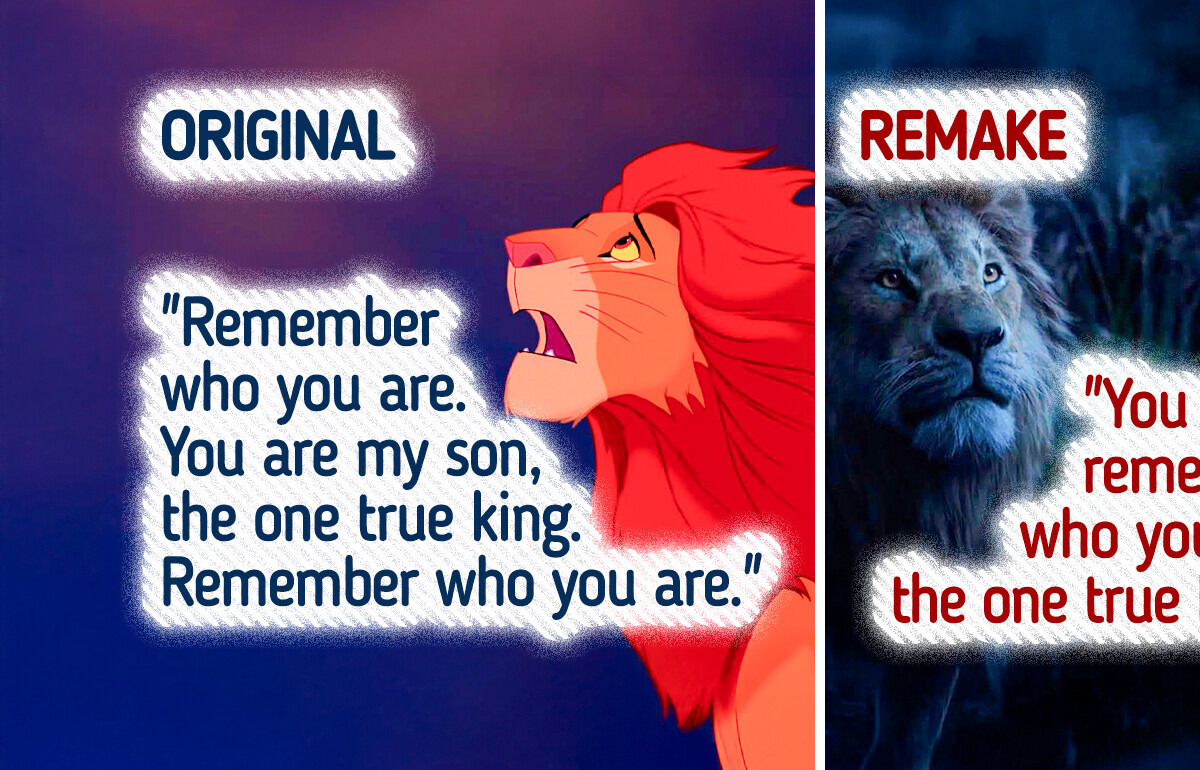
Disney remakes often change or drop memorable lines, reshaping scenes fans thought they knew by heart. Sometimes it’s a single word, other times an entirely new phrase—but each tweak can shift a moment’s meaning. Here are 10 striking examples of these changes.
In The Lion King’s iconic scene where Simba sees his father in the sky, both the 1994 and 2019 versions include the unforgettable phrase, “Remember who you are.” In the original, James Earl Jones delivers it with weight and repetition: “Remember who you are. You are my son, the one true king. Remember who you are.” The rhythm and emphasis make it deeply stirring. By contrast, the 2019 remake condenses it to, “You must remember who you are, the one true king,” which feels more straightforward and less resonant.
Visually, the difference is just as striking—1994 shows a vivid, majestic image of Mufasa’s face in the clouds, a powerful guide for Simba. In 2019, there’s no clear vision at all—just a talking cloud, making the moment feel more muted.
In the climactic showdown of Aladdin, both the 1992 original and the 2019 remake see Jafar reveling in his newfound power—right before Aladdin tricks him into becoming a genie and trapping himself in the lamp. In the 1992 animated classic, Jafar’s boasts are laced with clever puns tied to his magical attacks: “Princess, your time is up!” as Jasmine is trapped in an hourglass, or “Don’t toy with me!” as Abu is turned into a clockwork toy. These playful yet sinister quips add a layer of theatrical villainy to the scene.
In the 2019 remake, however, Jafar’s boasts take on a darker, more straightforward tone: “I can destroy cities. I can destroy kingdoms. And I can destroy you.” The shift changes the mood from flamboyant menace to blunt intimidation.
The iconic ballroom dance scene in Beauty and the Beast is one of the most memorable moments in both the 1991 animated classic and the 2017 live-action remake. In both versions, the song “Tale As Old As Time” remains unchanged, preserving the timeless romance of the scene. However, the moments following the dance highlight subtle but significant differences in how the characters interact.
In the 1991 version, the Beast asks Belle, “Are you happy here with me?” to which Belle responds, “Yes,” hesitantly, clearly still adjusting to her circumstances. This straightforward exchange sets the tone for Belle’s longing to return to her father.
The 2017 version takes a more nuanced approach. The Beast admits, “It’s foolish, I suppose... for a creature like me to hope... that one day he might earn your affection,” reflecting more vulnerability. Belle, in turn, responds more cryptically, “Can anybody be happy if they aren’t free?” This leads to a conversation where she hints at wanting to see her father, a more indirect plea compared to the direct request in the original. The changes give their dynamic a deeper layer of complexity.
The transformation scene in the 2015 live-action version of Cinderella enhances the magic of the original 1950 animated version by introducing cinematic depth and visual grandeur. While the 1950 animated version uses the Fairy Godmother’s song and rhyme to communicate her magic, it relies on bright colors and energetic animation to convey a sense of wonder. The animation is playful but feels somewhat static compared to the possibilities of modern filmmaking.
In the 2015 version, the transformation is brought to life with computer-generated special effects, adding a layer of realism and fluidity that makes the magic feel more tangible. The sequence builds gradually, with detailed visual effects that show the fairy-tale transformation in a more immersive way.
The line “You shall go to the ball!”, which is iconic and central in the live-action version, is absent from the animated film, with the closest thing being when the Fairy Godmother says, “You can’t go to the ball looking like that!”
The “I Wan’na Be Like You” scene in the 2016 live-action version of The Jungle Book significantly enhances the same sequence in the 1967 animated version by deepening the emotional stakes and transforming King Louie from a charming character into a more menacing threat. In the animated film, King Louie is a jazzy, carefree character, whose humor and catchy tune create a lighthearted atmosphere. He tries to charm Mowgli into teaching him the secret of fire, and the tone is playful.
In the 2016 live-action version of The Jungle Book, King Louie, voiced by Christopher Walken, is portrayed as far more intimidating, changing the tone of his interaction with Mowgli. To emphasize this darker portrayal, the song “I Wan’na Be Like You” includes an additional verse that makes Louie’s lust for power much more explicit:
Now you might think it’s ridiculous
That me, a gigantipithicus
Would ever dream I’d like to team
With the likes of you, mancub
But together, we’d have powers
All the jungle’s treasures, ours
I got desire, you got the fire
But the dream I dream takes two
This verse shifts Louie’s motivations from playful mischief to a more sinister and ambitious desire for control over the jungle. It’s no longer just about mimicking human behavior; it’s about gaining power, wealth, and dominance, giving the scene a much darker, more threatening vibe compared to the fun, lighthearted version of the original.
In the 1998 animated Mulan, the bathing scene is lighthearted and showcases Mulan’s vulnerability with a touch of humor. When Mulan bathes in a lake, she does so of her own volition, saying, “Just because I look like a man, doesn’t mean I have to smell like one.” This moment feels freeing, as she lets her hair down and embraces a rare moment of personal care, only to hide behind a rock when three soldiers approach, escaping with the help of Mushu. The scene is comedic, underscoring Mulan’s independence and desire to retain her femininity in a male-dominated world.
In contrast, the 2020 live-action Mulan shifts the tone significantly. Instead of bathing on her own terms, Mulan is compelled to bathe after her fellow soldiers make it clear she needs to, with lines like, “You reek, soldier,” “Have you even showered once yet?” and “You smell... bad!” This pressure highlights the external conflict she faces as she struggles to maintain her disguise. The scene, with Mulan bathing alone and her hair still tied up, underscores the emotional weight of hiding her true identity, adding depth and tension to her journey.
In the 2023 live-action The Little Mermaid, the moment Eric is discovered on the beach adds a sense of urgency and drama that is absent in the 1989 animated version. In the original, when Eric is found, Grimsby chuckles and says, “You really delight in these sadistic strains on my blood pressure, don’t you?” This line brings a humorous, lighthearted tone to the situation, easing the tension.
However, in the 2023 remake, the discovery is marked by a nameless soldier shouting, “He’s alive! Alert the queen!” The shift from humor to urgency transforms the moment into something much more serious and emotionally charged. Eric, still dazed from the shipwreck, remains unconscious for a longer period, intensifying the stakes. The scene’s realism and the heightened tension make Ariel’s emotional journey more profound, as it’s not just about longing for the human world, but grappling with the gravity of her decisions.
This change in tone, from whimsical to urgent, deepens the emotional impact of the reprise, making Ariel’s transformation feel more grounded and significant.
In the 2003 live-action version of Peter Pan, the scene where Peter and Wendy nearly kiss is more emotionally resonant and thoughtful than in the 1953 animated version. The animated film includes Peter’s dismissive line, “Girls talk too much!” which undermines Wendy’s autonomy and adds unnecessary humor to the moment. This line is wisely omitted in the live-action version, allowing for a more respectful and sincere interaction between the characters.
Additionally, the 2003 film reintroduces a powerful line from the original Peter Pan play and novel: “One girl’s worth more than twenty boys.” This line highlights Wendy’s significance and agency, shifting the dynamic to one of mutual respect rather than one of playful gender stereotypes. By removing the trivializing line and bringing back this meaningful dialogue, the live-action version deepens the emotional stakes of the scene, allowing the relationship between Peter and Wendy to feel more balanced and meaningful.
Additionally, the live-action film removes gratuitous upskirt shots of Tinker Bell, which are present in the animated version, making the scene feel less objectifying and more respectful.
Wendy’s shy use of “thimble” instead of “kiss” in the live-action version adds cuteness and innocence to the moment, emphasizing her vulnerability. This small but significant change makes the scene feel more tender and emotionally resonant. Overall, the 2003 version enhances the scene by focusing on the characters’ emotional journey, making it a more charming and meaningful moment.
In Alice in Wonderland, the Queen of Hearts’ iconic “Off with their heads!” line appears repeatedly in both the 1951 animated classic and the 2010 live-action version, but the delivery couldn’t be more different. In the animated version, the Queen’s voice is filled with raging fury as she barks the command, her anger palpable and uncontrollable. She’s a tyrant fully consumed by her temper, and the line echoes her deep frustration and instability.
In contrast, the 2010 live-action version, directed by Tim Burton, gives the Queen a much more playful, childish tone. Played by Helena Bonham Carter, this Queen isn’t so much enraged as she is mad with power. Her “Off with their heads!” lines come across less as a spontaneous outburst and more as a whimsical, almost casual declaration—she’s not doing it out of anger, but because she can. This shift in delivery makes her feel more like a petulant ruler throwing tantrums rather than a truly dangerous figure, adding a layer of dark humor to her character. Both versions capture her authority, but with vastly different emotional undercurrents.
The 1961 animated version and the 1996 live-action version of 101 Dalmatians differ notably in their portrayal of Cruella de Vil’s first appearance. In the 1961 version, Cruella’s visit to Anita and Roger’s home is the first time we see her, and she arrives before the puppies are born, asking about them.
In contrast, in the 1996 version, Cruella is first introduced arriving at her fashion house, and when she visits Anita and Roger’s home, the puppies have already been born. She offers to buy them, becoming very angry when Roger and Anita refuse.
The shot of Cruella in silhouette behind the door is faithfully recreated in the live-action version, but the rest of the scene is quite different. The 1996 version is better because it gives more weight to Cruella’s conflict with Anita and builds a more dramatic tension. The 1996 version’s stakes feel higher, with Cruella’s anger and the personal threat to Anita’s livelihood creating a more intense, emotional moment compared to the lighter tone of the animated scene.
The 1996 version also shows a more personal connection between Cruella and Anita, as Cruella fires Anita after she refuses to sell the puppies, whereas Anita is not employed by Cruella in the animated version. The iconic line, “I live for furs! I worship furs!”, is omitted in the 1996 version, making the live-action version’s Cruella feel more grounded.
It’s surprising how many iconic lines from the originals are either removed or altered in the remakes, proving that even the most beloved moments aren’t immune to change. While the originals will always have a special place in our hearts, these shifts in dialogue and delivery highlight how reimagining a classic can take unexpected turns. Whether it’s a line being omitted entirely or a twist on a familiar phrase, it’s fascinating to see how these changes impact the emotional tone and depth of the scenes. Despite the strong connection to the original, sometimes these adjustments challenge our expectations and offer a fresh perspective on the magic we thought we knew so well.
You might also enjoy seeing how animated characters would look with realistic body proportions.



